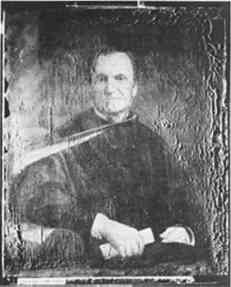USE OF A PRESSURE-SENSITIVE ADHESIVE TO FACILITATE THE TRANSFER OF A SEVERELY TENTED PAINTINGGIANFRANCO POCOBENE, & IAN HODKINSON
1 INTRODUCTIONPaintings conservators are well aware of both the beneficial and the deleterious effects of moisture on canvas-supported oil paintings. While the prudent use of moisture during treatment can significantly reduce paint layer distortions such as cupping, draws, and dents, excessive amounts of water can be devastating to the structure of a canvas painting. In both instances water is absorbed by the painting, yet the results are dramatically different. Damage from excess water can include blooming and blanching of the varnish and paint film, detachment of an old lining, and tented cleavage of the paint and ground layers. In extreme situations of total saturation, some canvas paintings exhibit almost complete disintegration of the image layers. This paper deals with a canvas painting severely damaged in a flood and its subsequent conservation and restoration. While paintings from any period can be damaged by water, the picture in question is typical of a group of 19th-century paintings that are highly susceptible to water damage. These paintings, executed on commercially primed fabrics, are constructed in a manner that greatly increases the possibility of canvas shrinkage and damage to the paint and ground layer. This study also describes the mechanical response of canvas paintings to water saturation. In August 1984, during building alterations, water from a prolonged heavy rainstorm entered the storage vault of the Agnes Etherington Art Centre at Queen's University in Kingston, Ontario, Canada. A number of paintings in the collection were damaged in that flood disaster. One picture, a 19th-century portrait in oil on canvas, illustrates the extent of damage that can
After removal from the storage vault the painting showed signs of complete disintegration as it began to dry. Further damage was prevented by promptly placing it in a humidity chamber at 70% RH. The painting was kept at that constant humidity level to avert further compression of the paint layers. So critical was the painting's condition that it remained in the humidity chamber while treatment options were considered. |
